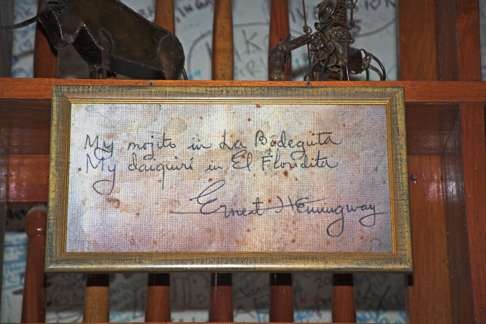
What makes a Havana mojito so special, and how Hong Kong’s best mojitos compare
Ernest Hemingway immortalised the classic Cuban cocktail, though it’s unclear which Havana bar first made it, or if indeed it was invented there. These days it comes in many varieties
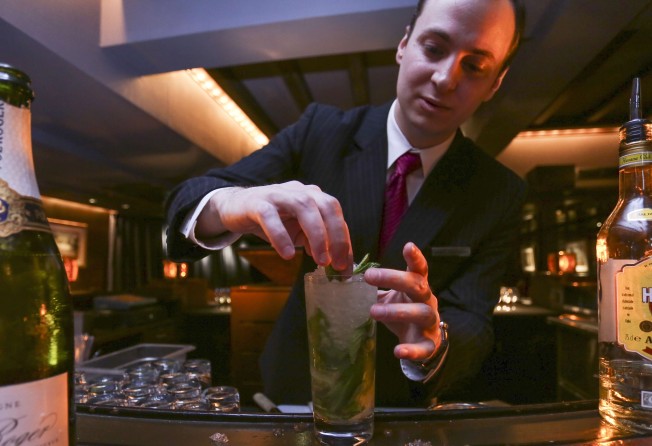
Whatever the other implications of the US normalising relations with Cuba may be, one thing is certain – the already busy bartenders at La Bodeguita Del Medio are going to be mixing even more mojitos.

Whether or not he ever said or wrote that, there’s not much doubt that Hemingway was an enthusiastic patron of both bars. They are about equidistant from an apartment he occupied, which now houses a museum dedicated to him. If he drank half as many mojitos and daiquiris as the legend maintains, it’s a small miracle that he was ever sober enough to write.
La Bodeguita doesn’t hammer the Hemingway link quite as hard as El Floridita, which has a life-sized bronze statue of the great man leaning on the bar, but it is emphatic about its ownership of the mojito.
It claims that the mojito was created there in 1942 when the bar was called the Casa Martinez, and that a craze for it swept Havana.
However, there is evidence that the mojito, or something very like it, has been in existence in the Caribbean for centuries.
There is a record of a drink which sounds very much like a mojito – albeit without ice – being prepared in Cuba for British sea captain Sir Francis Drake as long ago as 1585, and the name is thought to derive from the African-American word “mojo”.
The modern mojito – comprising dark or white rum, fresh lime, mint and sugar, muddled then topped up with ice and soda water – is regarded as a member of the julep family of cocktails, and the mint julep has been around since the 18th century.
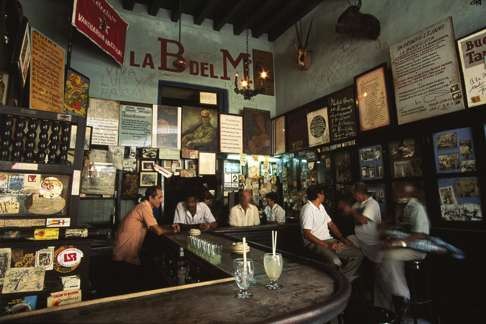
Because mojitos are relatively simple to prepare, however, pretty good ones using a variety of mints can be found all over the world.
Remarkably, a 2014 report by consultancy firm CGA Strategy on the consumption of mixed drinks in the UK established that the mojito was the favourite cocktail of chilly Britain.
Rather like the dry martini, it may owe some of its current global popularity to being featured in a James Bond movie. In 2002’s Die Another Day, Pierce Brosnan as Bond introduces himself to Halle Berry by offering her his mojito. It seems to do the trick.
The drink is also a well-established favourite in many Hong Kong bars, where mojitos are offered in a number of different variations on the classic recipe.
Today many bars use sugar syrup rather than sugar for sweetness, and the addition of bitters, and the substitution of lemon juice for lime is common, but you can go further and replace the rum with tequila for a Mexican mojito, or with gin for an English mojito.
Armani/Privé in Central is known for its lychee and strawberry mojitos, and the Issaya Siamese Club in Causeway Bay uses lemongrass and kaffir lime leaves to give its mojitos a Thai touch.
At Mahalo Tiki Lounge in Wan Chai, most mojitos are served over cracked ice, but you can order a “classic” mojito with ice cubes, lemon rather than lime, and Angostura bitters. The drink is also available there made with plantation rums from different Caribbean islands, and the difference between the two I tried was substantial. A strong coconut flavour was present in the mojito made with rum from Barbados that was wholly absent from the one made with rum from Grenada.
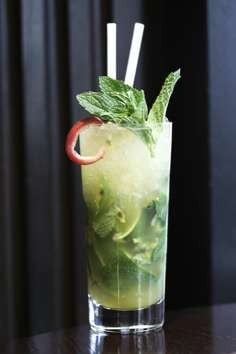
They use mint grown in the Hyatt’s own rooftop mint garden. Fortunately mint is an easy herb to cultivate in Hong Kong. It grows like a weed and requires very little attention, so you can do this at home.
The most popular options, Sandberg says, are the self-explanatory passion fruit mojito – a bit on the sweet side for me – and the drier Mojito Royale.
“Essentially it’s a standard mojito with champagne [instead of soda water],” he says. “It’s super-fresh, super-light. I like to use Pol Roger Extra Brut because it has a very low sugar level. It’s very dry and doesn’t detract from the lime and mint flavours.”
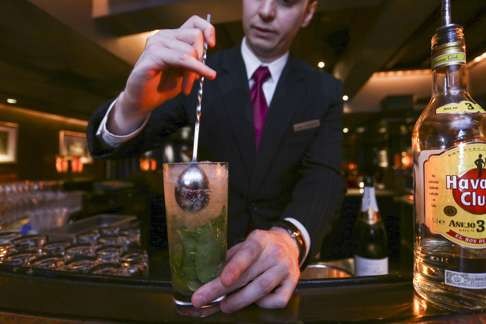
It is very true to the Cuban tradition, though, in sticking to Havana Club 3 Year Old white rum – which virtually all Havana bars use for their mojitos. The others three recipes specify Bacardi, which Sandberg says tends to get “a little lost in the champagne”.
You can substitute other sparkling wine for a broadly similar cocktail, but it would be cheating a bit to call it “royale”. Sugar at the East hotel offers a very acceptable variant they call the Mojito Reloaded, made with cava.
Guests at the Champagne Bar, Sandberg says, occasionally ask for their own favourite variants, of which the strangest he has ever had to prepare was a banana mojito. It looked, he says, horrible, and he imagines it tasted the same.
In the course of a hot summer, though, you can’t go too far wrong with most of the more conservative interpretations. And although it is certainly worth your while going, as I did a few years ago, on a mojito crawl round Havana, there are plenty of good ones much closer to home.
Armani/Privé, 2/F, Landmark Chater, 8 Connaught Road, Central, tel: 3583 2828
Issaya Siamese Club, 25/F, Soundwill Plaza II – Midtown, 1 Tang Lung Street, Causeway Bay, tel: 2154 3048
Mahalo, 29/F, QRE Plaza, 202 Queen’s Road East, Wan Chai, tel: 2488 8750
Champagne Bar, Lobby, Grand Hyatt, 1 Harbour Road, Wan Chai, tel: 2588 7722
Sugar, 32/F, East, 29 Taikoo Shing Road, Taikoo Shing, tel: 3968 3738